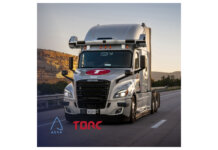The U.S. Department of the Treasury and Internal Revenue Service (IRS) released additional guidance under President Biden’s Inflation Reduction Act (IRA) on eligibility for incentives to install electric vehicle charging stations and other alternative fuel refueling stations.
The U.S. Department of Energy is also releasing a mapping tool to help households, businesses or other organizations considering those investments to find out whether they may be eligible for the tax credit.
“President Biden’s Inflation Reduction Act has been a game-changer for American consumers and automakers,” says Deputy Secretary of the Treasury Wally Adeyemo. “The law has unleashed an investment and manufacturing boom in the United States unlike any we’ve seen in decades, with companies from around the world choosing to do business in America and electric vehicle sales surpassing 1 million for the first time in 2023. Additional clarity around the law’s incentive to build new charging infrastructure in communities that need it most will help drive continued progress in 2024.”
The Alternative Fuel Vehicle Refueling Property Credit (30C) works in concert with the IRA’s Clean Vehicle Credit and Advanced Manufacturing Production Credit to encourage clean vehicle adoption, lower costs for consumers and onshore the entire clean vehicle supply chain. This incentive provides a credit for up to 30% of the cost of qualified alternative fuel vehicle refueling property placed in service by the taxpayer.
The credit may be claimed by individuals for home EV charging and other refueling equipment and by businesses. This credit with respect to any single item of property is limited to $100,000 for business property, and $1,000 for personal property. It can also be claimed through “elective pay” (often called direct pay), meaning that elective pay-eligible entities such as governments and tax-exempt organizations making investments in EV infrastructure can benefit.
While expanding the 30C credit, the IRA added a requirement that qualified property must be placed in service in an eligible census tract. An eligible census tract is any population census tract that is a low-income community or that is not an urban area.
This notice announces an intent to propose regulations to define eligible census tract and includes two appendices that provide the list of eligible census tracts. Low-income community census tracts follow the definition provided for purposes of the new markets tax credit. Non-urban census tracts would be those tracts within which at least 10% of the census blocks are outside of urban areas. See Appendix A and Appendix B for eligible census tracts.






Wally probably needs to stick to treasury ideas and not this poorly written legislation. DOE was established to bring efficiency and abundance to U.S. Energy. This legislation incentivizes electric charging in low income areas because so many of our poor are out buying Tesla cars. It also incentivizes “governments and non-profits” to invest in these bad ideas all while hiding the true cost of electric vehicle ownership. More non taxpaying entities wasting precious tax dollars. We need to spend infrastructure wisely not wastefully.
This is great news!